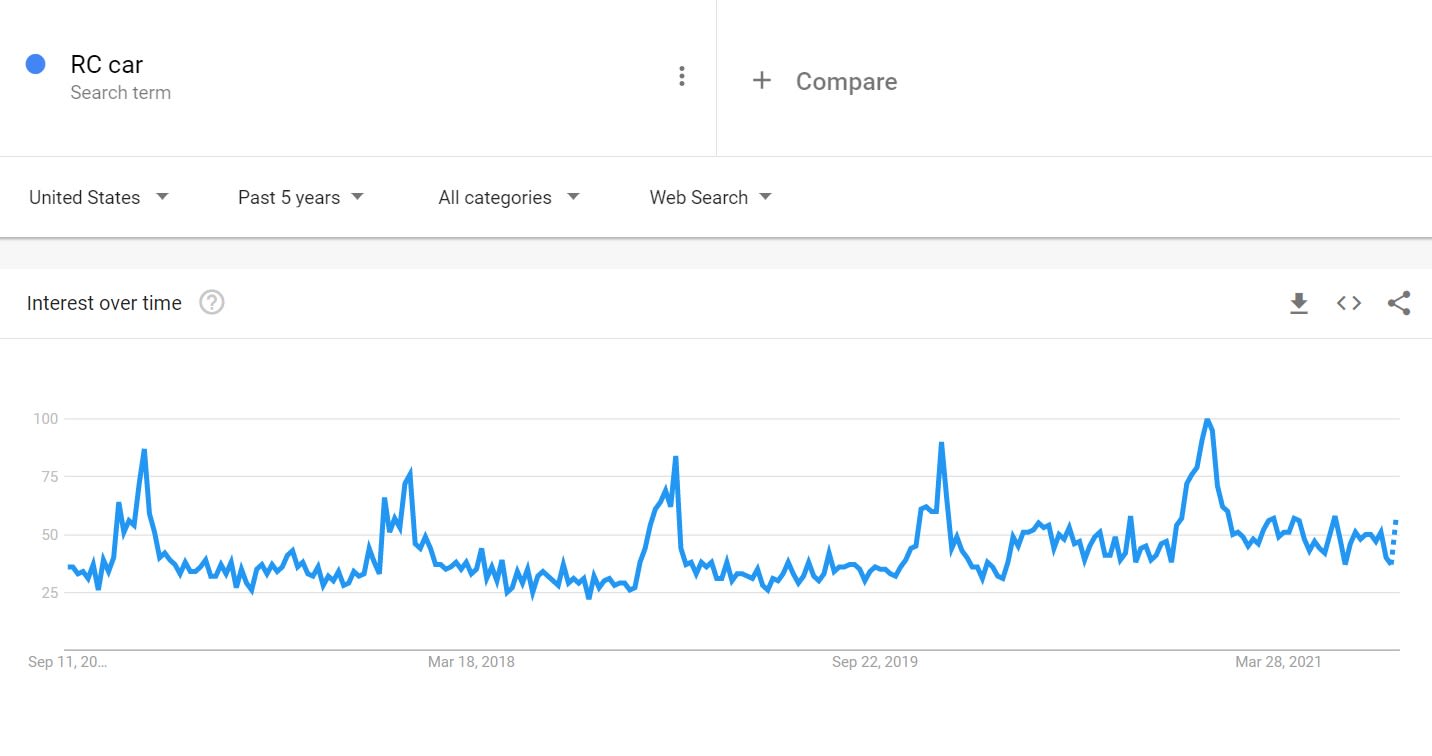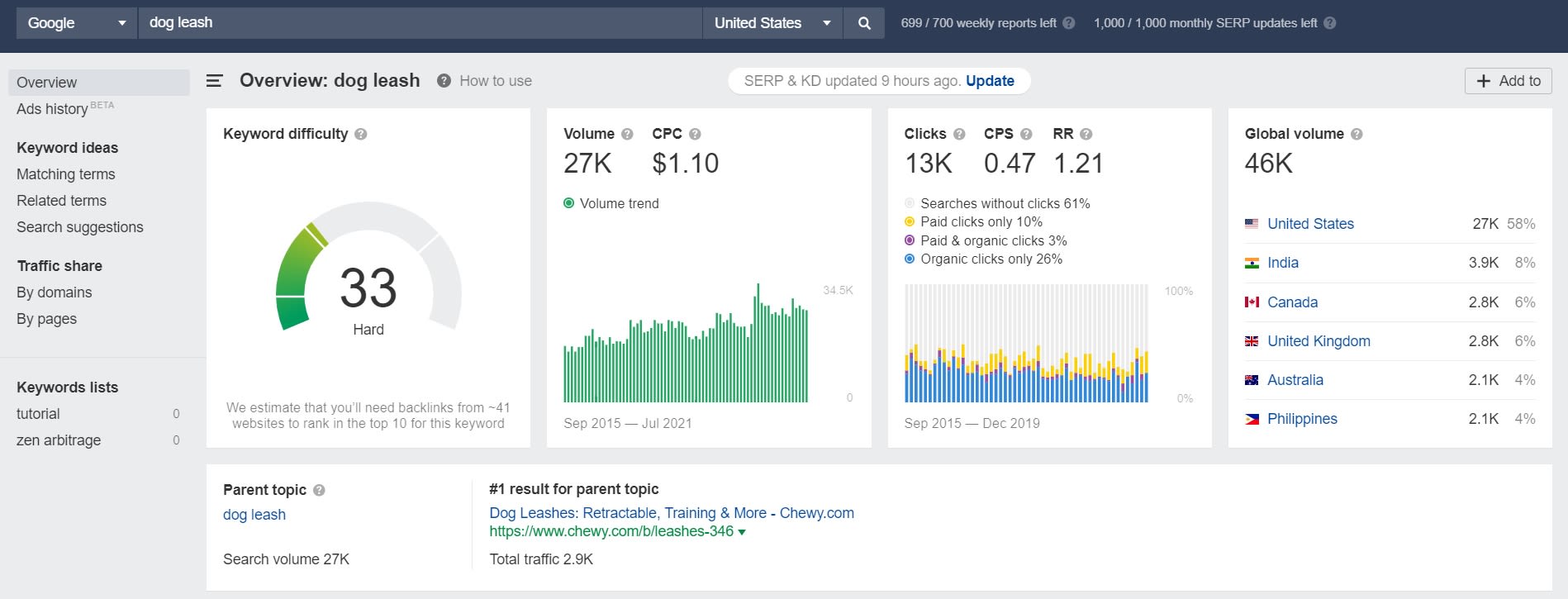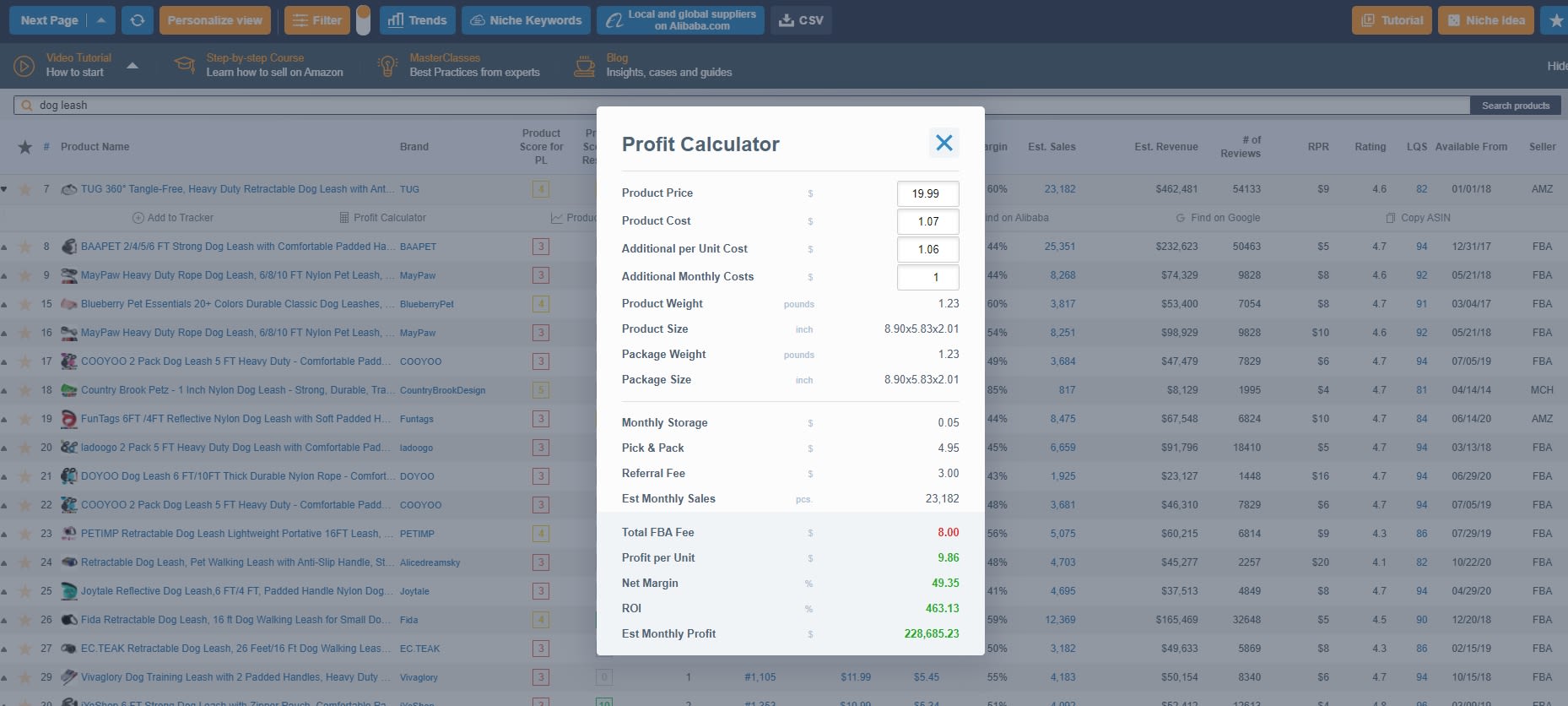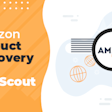
How to Evaluate Market Opportunities for eCommerce Business
Knowing the best market to enter as a business owner can be challenging. To address and simplify that complexity, you need to break your strategy into analyzing two important factors: market viability and product viability.
Table of contents
What is Market Viability and Product Viability?
The definition of market viability is the potential of having a successful business in a specific market. Companies assess market viability by analyzing the size of the market relative to its competition. Markets with higher sales have a greater viability. Competition also impacts market viability. The more competition in a market, the lower its market viability.
While market viability refers to an entire target market, product viability measures the potential for your product to solve customers’ problems, thus succeeding in the market. You can assess your product viability by understanding customer needs and how well your products’ features are aligned with those desires.
How To Evaluate the Market and Find Product Ideas
Evaluating market and product viability is a critical step in planning a business. Many new business owners use Amazon to assess how viable a potential market and product are. There are millions of items on the marketplace and strong performance on Amazon is usually a sign of a greater global demand.
Below you will see a step-by-step process for using Amazon to test market and product viability to find items with strong profit potential for sellers.
1. Determine Product Criteria
The first step is to determine the initial criteria for the products you want to sell. Different item attributes such as size and weight impact how profitable a product can be. It is important to layout what requirements your products need to fit before you dive into researching potential markets.
Here are some of the most important traits to look for in a product:
Oversized items cost more to ship, meaning you’ll have to pay a higher per-item cost when sending them. Large items also cost more to store as they take up more space.
Heavier items are more challenging to ship, meaning that they will also cost more than lighter items.
Shipping fragile items is complex. Be sure you have adequate packaging that will cost more to handle.
Mechanical items are more prone to breaking. When selling with Amazon, these always have a higher-order defect rate.
Knives and archery equipment are considered dangerous to ship. As a result, you’ll need to take extra precautions.
When selling products, your priority should be to find something manageable. Don’t start by selling a 30-ft porcelain swan. Hit your target niche by selling a small, effortless item.
If you want to sell a challenging item, be aware of the costs and risks associated with it.
2. Examining Niche Market Trends
The first step to finding product ideas to evaluate the recent trends for different markets. These days, search engines make this process simple because you can find trends by looking at the search terms people use.
Here are some tools you can use to see how many people are searching for a particular market:
Google Trends
The Amazon Trend Report
Search Engine and Marketing Analytics Tools
Amazon Analytics Tools
1. Google Trends
Google Trends is a great place to start for people who have a general or specific target in mind. Both sides will enable you to see how interest is growing among search terms.
For example, if you wanted to sell RC cars, you can quickly see how searches for this term have changed over several months. It also shows the growth of these topics and related topics as you scroll down. Those related topics might end up being a target niche.
2. The Amazon Trend Report
The Amazon Trend Report gives you a good overall idea of significant potential targets. The big thing in 2023 is at-home workouts. You might be able to find an underserved target audience within the “at-home workouts” niche.
3. SEO and Marketing Analytics Tools
Keyword search volume is usually a direct indicator of the demand for a market or product. This is why marketing and SEO analytics tools are beneficial. SEO tools let you research any keyword to see exactly how often people search for it. With these insights, you can find the products that people frequently search for.
Search engine tools like Moz, Ahrefs, or Similarweb also contain competitive data. This allows you to see who is ranking for certain keywords and how strong their business is. You can use this data to determine how difficult it will be to enter a particular market segment.
4. Amazon Analytics Tools
General search engine and marketing analytics tools are great for targeting broader market segments. But eCommerce merchants that want to sell on third-party marketplaces can benefit from tools with data from Amazon and other markets. Amazon holds half of the US eCommerce market and there are plenty of third-party Amazon selling tools to gain deep insights into profitable product ideas
For example, AMZScout Keyword Search tells you how many people are searching for particular products and how this number is changing over time.
Once you find high demand keywords, you can search for this type of product in the AMZScout Product Database. There you will find all those products on Amazon including valuable data such as how many sales they generate and their average rating. You can use this data to see if a market is too competitive with many sellers.
You’ll also want a tool that can provide estimated revenue and product history, like the AMZScout PRO AI Extension. This helps ensure you can make a profit on any product you release.
3. Identify your Target Audience
Once you determine a list of potential products you’d like to sell, your job has only begun. The key to narrowing down your target market comes down to understanding customer personas.
Creating a customer persona breaks down potential users of a list of products you’ve made. You’ll want to understand their problems, needs, and desires through this step in the research process.
To do this, understand the user experience by reading customer feedback products similar to what you offer. See what they love, hate, and the things they aren’t too excited about. Typically, customers will look for products that do the following:
Save time
Cost less
Create convenience
Reduce pain
Increase joy
From these, you will add how your product addresses their concerns or improves their lives in your product description.
4. Analyze Your Competition
Your next step involves competitive analysis. The competition in your market will directly impact how well you are able to sell your products. If a niche is too competitive, it will be difficult to see significant sales, especially if you are a new seller.
When assessing the competition for a niche you need to analyze a myriad of performance data. Below are some of the important factors to consider:
Number of reviews: Products with more reviews tend to get more sales. This means that if a niche has numerous products with a high number of reviews it will be harder for you to get early sales.
Listing Quality: Well-made product listings lead to higher conversion rates and more sales. If a market is full of products with low-quality listings, it will be easier for you to see sales.
Number of strong sellers: Strong sellers are those who are well known and have sold successfully on Amazon for a long time. If a niche has many strong sellers it will be hard to see a lot of sales.
AMZ Sellers: Amazon sells many of the products on its marketplace itself. If a niche has a lot of AMZ products, the competition will be higher as Amazon will favor its own items for SEO and the buy box.
Average Rating: Ratings are a major factor in consumers’ purchasing decisions. Similar to a high number of reviews, if a product has a high rating it will be more difficult to compete with. A market where the average rating for all products is best avoided.
Top Brand Competition: Top brands naturally garner more attention from customers and take up a larger share of the market. If you plan to use private label or dropship products, it is ideal to not have to compete with name brands.
Customer Feedback: Customer reviews provide valuable insights into your competitors’ performance. By analyzing these reviews, you can identify areas for improvement and discover opportunities to differentiate your product and listing.
However, sorting through large volumes of reviews manually to identify trends can be time-consuming. AMZScout’s AI Review Analyzer streamlines this process, as it quickly scans reviews to extract key patterns. This enables you to refine your product listings and marketing strategies with ease. Let's take a look at how to use it.
Analyzing Competitors' Reviews
The AMZScout AI Review Analyzer allows you to quickly uncover the strengths and weaknesses of a product by analyzing customer feedback. Here’s how it works:
1. Go to the AI Review Analyzer page. Enter your email address to start a free trial (you get one free product check).
2. Start your search. Click “Analyze Product by ASIN”, enter the product’s ASIN, and click “Get Review Analysis”.
3. Review the results. The tool will provide detailed statistics, graphs, and textual insights based on customer reviews.
This process helps you understand your competitors’ performance and pinpoint opportunities to refine your own strategy. For more in-depth insights, it’s best to combine this review data with broader niche analysis.
Analyzing the Niche
The most efficient way to find this information is to use the AMZScout PRO AI Extension. With the software, you can quickly see the competition level for any niche directly on Amazon.
To analyze a niche, you first need to go to the category page on Amazon or enter a keyword in the search field. On the next page, the extension will compile all the data for the ranked listings to provide a score for the niche. You can get a detailed breakdown of this analysis by clicking the round button in the left corner of the browser.
There you will find valuable sales data for the products in the niche including each item’s:
Estimated sales
Estimated revenue
Number of reviews
Ratings
Net margin
FBA fees
By viewing the Niche Score you will see a detailed analysis of the competition for the market including the strength of the other sellers, the average rating and listing quality, and whether there are any top brands.
Another way to gauge the competition for a niche is to use the ASIN Lookup tool. The software lets you analyze any competitor listing on Amazon to see what keywords they are optimizing for and using in their ad campaigns.
5. Identify Sales and Traffic Sources
The next step is to identify where you want to sell the product and how you are going to bring people to your product. You’ll want to determine your easiest commercial starting point that works with your chosen product.
Starting on Amazon is one of the easiest ways to get started. It teaches you the basics of market penetration while maintaining a healthy level of competition. Statistics from economists tell us that the lack of true competition is not good for economies or markets.
With Amazon, it’s also easy to see if you have an over-saturation of products. Using the research steps mentioned earlier, you can find out whether there is a product gap using existing trend reports.
You can combine this with third-party marketplaces as well. Amazon integrates with Shopify to assist you in providing one inventory source for multi-channel fulfillment. However, you’ll need to establish different inventory sources when entering other marketplaces.
You’ll also need to determine your best methods for drawing people to your store. Below are a few examples of how to bring people to your storefronts:
Amazon Advertising: If you want to introduce a new product, it’s important to be aggressive in your advertising. The Amazon Featured Products and Brands advertisement methods are two such examples. If your product truly solves a problem, your ad spend can generate a positive return on investment.
Off-Site Digital Ads: You’ll also want to include advertising on third-party platforms like Google. After effectively penetrating Amazon, you can introduce your products to other markets to start building your audience.
Social Media: A good measure of success comes from the size of your social media following. Social media profiles with an active following are a great way to direct traffic to your products.
Local Advertising: If you have a brick-and-mortar store (or just own a local business), many customers prefer shopping locally over online. Customers will often pay a premium knowing that they are supporting local businesses.
For sourcing your products, there a few common options:
Reselling: you buy products at a wholesale cost from a supplier and sell them at a premium on marketplaces or your own eCommerce site
Private label: you partner with a supplier or manufacturer who creates a product with your branding.
Manufacturing: you acquire the equipment and develop the processes to create your own products in house.
Dropshipping: you list suppliers’ products across different sales channels—when a customer places an order, you buy the product from the supplier, giving them your customer’s details for the shipping information.
6. Determine Business Profitability
Before going through and purchasing your inventory, you’ll want to ensure you can sell the product for a profit. To do this, you have a couple of different options:
Create a spreadsheet to manually calculate potential profit margin by subtracting all product costs from your target sales price
Use the AMZScout Pro AI Extension
With the Pro AI Extension, you can quickly see how profitable a potential product is by adding the price and the sourcing costs—the extension will handle the calculations.
If you are selling on Amazon as an FBA seller, you can also use the AMZScout Amazon FBA calculator.
If you choose to use a spreadsheet, be sure to include all product and operation costs when forecasting your profit margins. Typical expenses include the following:
Product manufacturing costs
Shipping and delivery fees to get your products to the fulfillment center
Marketplace fees
Ad expenses
Travel expenses
Overhead costs (if you handle a warehouse)
Brick-and-mortar costs (physical storefronts, can be included in overhead costs)
Costs of hiring employees (contracted, full-time, part-time, etc.)
Taxes
Break down each of your costs, as you’ll need to provide those numbers to the governments of the locations where you offer products and services.
Developing and Evaluating Your Marketing Strategy
Once you’ve got a breakdown of a few product and market strategies, you need to determine its capabilities. Below are four ways you can do that:
1. SWOT Analysis
A SWOT analysis looks at four areas:
Strengths - how does the product/strategy do well.
Weaknesses - Where can you improve, or where do other people outperform you.
Opportunities - What can you take advantage of?
Threats - What could prevent your plan from working
Break these down into a simple four-quadrant table and brainstorm to determine where you need to focus. Having an awareness of these opportunities gives you a chance to plan for them.
If you’re looking to simplify this process or you lack experience, a SWOT analysis can be generated in seconds. Just click the AI Product Analysis button under any product in the AMZScout PRO AI to receive a breakdown of potential risks and opportunities. This will help you determine if the product aligns with your goals and if the challenges are manageable.
2. PESTEL
Formerly known as the PEST Analysis, this tool covers five different vital areas:
Political - Determines how to handle government incentives or regulations.
Economic - Determines how your company responds to changing economic conditions.
Social - Represents changes or tends based on demographic changes or customs.
Technology - Determines how your product must change with technology.
Environment - Determines how your product changes with carbon footprint, pollution, or raw material limitation concerns.
Legal - Deals specifically with antitrust, employment, consumer protection, or discrimination laws.
This analysis determines how your company’s products change with external factors. Especially those that deal with regulatory or economic changes.
3. Five Forces Analysis
Porter’s five forces delve into the following areas;
Level of competition
Threat of new entrants
Supplier power
Customer power
Threat of substitute products
Most of this comes from how third parties impact your position in the business. On Amazon, the threat of customers, new entrants, and substitute products can be incredibly high. Your goal should be to establish a name for yourself through a recognizable brand to reduce the threat of being overtaken.
4. SOAR
A SOAR analysis is a positive variant on the SWOT analysis:
Strengths (see above)
Opportunities (see above)
Aspirations - Goals for your company in the future
Results - Measurable outcomes for accomplishing your goals
Performing a SOAR analysis is excellent for forward-thinking businesses. It forces you to think about what you want for yourself (and your business) in the future.
Final Thoughts on Product and Market Viability
If you want to be competitive in the eCommerce market, you need to analyze all available information. By understanding your market and creating plans for every opportunity, you give your business the most excellent chance to thrive.
We hope that this article helps you with the product development process. Always be aggressive but calculated in pursuing your eCommerce business. If you have any questions about starting your advertising business, follow our blog for regular tips and tricks!
Market and product viability is essential when establishing an eCommerce business. Whether you struggle or need a few tips to push you over the top, it’s important to always stay knowledgeable. For tips and tricks on effective products and the right time for market penetration, check this article out.












